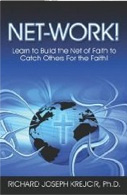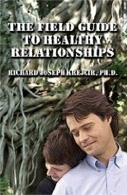Jesus is Risen!
General Idea:
Jesus has risen from death! Early on a Sunday morning nearly two thousand years ago, Jesus defied the laws of science, nature, and reason, moving from being completely dead to being completely regenerated and resurrected, proving He is indeed LORD over life and death and offering us hope for today and everlasting life for tomorrow. Mary Magdalene was the first to witness this; at first, she did not understand what was going on. She found the stone rolled away and the tomb empty, so she ran to tell Peter and John. She exclaimed they have taken the Lord's body; I do not know where He is! Peter and John ran to see. John went to the threshold and saw for himself, and then they both went in and saw that the burial linens were left but Christ was gone. Impossible, perplexing, and yet observing that the linens were neatly folded, the realization came that the Scriptures were being fulfilled! Then, while Mary was outside of the tomb, two angels asked her why she was crying. All she could think of was to ask where Jesus' body was. She did not recognize the veracity of the situation because she was consumed with grief and uncertainty. At this time, as Jesus made His first resurrected appearance, she still did not recognize Him or understand what was going on. Jesus asked her why she was crying and for whom she looked. Thinking this was a gardener, blinded by anguish, skepticism, and tears and probably not even looking at Him, all Jesus needed to do was call her by name: Mary! He then asked her to go and tell the others, and so she did: I have seen the risen Lord!
Contexts and Background
In this passage, Friday's death has passed and Sunday has come! The climax has come! Our Lord's life and mission have now reached culmination, what we celibate as Easter. The history of man, our fallen state, the move of our Lord through history and our lives has interwoven to the finishing point. He lived on our behalf. He has died in our place to absorb God's wrath and pay our debt of sin; now, He arises to life, conquers death, and gives us victory and grace for a life of fulfillment and fullness (Psalm 16:11; 107:09; Isa. 26:3; John 14:21; Gal. 5:16; 22-23; 1 John 1:7-9; 3 John 4)! This passage contains the ultimate wonder of the universe-the incredible impossible, and the incredible triumph. Jesus was crucified; He died, was buried, and now He is back to life, arisen!
Commentary-Word and Phrase Meanings
· Early on the first day of the week. Referring to eager devotion. The Roman week days were the same as ours today. The Jewish Sabbath went from Friday at sundown to Saturday evening. Thus, Jesus' followers had to wait to go to the tomb until Sunday morning. The significance here is that this is the reason we worship Jesus on Sunday and not Saturday, although, as Paul states later, day and time are not as important as having our hearts and minds focused upon Him. Mark states that this was "just after sunrise" (Mark 16:2). A contradiction? No, because there were many women going there at different times (Rom. 12:1; Col. 2:16-23; Heb. 12:28).
· Mary Magdalene was close to Jesus and one of His main helpers, and would have gone to the tomb within three days after the Sabbath to make sure His burial preparations were done. She would have grieved for at least seven days, according to custom. It was radical then that the first ones to see Jesus arisen were the women. This is very important because in this time and culture, a woman's testimony was irrelevant. Jesus is validating women-their personhood, contribution, and worth! He counteracts to the cultural norm here to make His point. To reveal Himself to the women first shows that He is the One that is significant, and not our traditions or beliefs. However, it will take several centuries for this reality to set in as far as the church is concerned (Luke 24:1; John 19:42; Eph. 5:22-33).
· Tomb/grave. After death, the bodies were either buried in the ground or interred in an antechamber in a cave outside of the city or town limits, fulfilling both Jewish burial laws and Roman law. A tomb had several "loculi," burial chambers or benches cut into the limestone walls that could hold many decomposing bodies, with smaller "arcosolia" niches, or both that could be used, and many more small burial boxes called Ossuaries, much like the one recently discovered that may have belonged to James, the brother of Jesus. Most burial sites were owned by clans and rich families. A year later, after the bodies had decomposed, they were dug up, placed into a family crypt, and positioned into a slot in the wall like a modern safety deposit box. This process could take one to two years. This was done due to land space and expense. The Ossuary would be placed on a shelf in the tomb. This is still practiced in many parts of the Middle East today. The location of the tomb was in a garden near where Christ was crucified (John 19:41). There is ample archaeological evidence that the Church of the Holy Sepulcher (Catholic) in Jerusalem is perhaps the real site of Jesus' tomb fulfilling Isaiah 53:9. Most Jews believed in a resurrection at the end of the Age (Isa. 53:9; Matt. 27: 60; Luke 23:53; John 11:38-57; 19:41).
· The stone. The tombs of the wealthy had large, circular stones, about four to five feet in diameter, cut into the cave face with an upward slant. It would take several strong soldiers to move it. Matthew adds the "tomb be made secure," giving testament to the validity of Jesus' resurrection as the government and the religious leaders had a vested interest to keep Jesus buried! Pilate allowed Roman guards to secure the tomb, leaving no possibility for someone to intervene and steal the body (Matt. 28:11, 14). Anyone tampering with the seal would invoke the death penalty for it. No one would have been that foolish; and, even if they were, the wax of the seal could not have been recreated and thus, the resurrection would have proven to be a fraud. If anyone tampered with the tomb, the religious leaders would have used this to put down the new Christian group once and for all. Classic liberal and critical scholarly rebuttals offered justifications that perhaps the Disciples had gone to the wrong tomb, the body was stolen, or Jesus was really not dead (the "swoon theory" meaning passed out), all pathetic attempts to avoid the real Truth. If any of these were so, people could easily check the correct tomb or have found Jesus body or that He was still alive. If it were just a hallucination, how did it affect so many people for such a long time? Again, the facts can be checked; this indeed did happen (Matt. 27: 57-60; Mark 15:46; Luke 24:2)!
· Simon Peter. He became the leading member among the disciples (John 6:67-69).
· Other disciple. Referring to John the Apostle, a humble, human instrument of this Gospel (John 13:23; 18:15-16).
· They have taken the Lord out of the tomb. "We," in the context, indicates that there were several women there as recorded by Matthew, the same ones who remained with Jesus at the cross. Perhaps, they did not understand or "connect the dots" of what Jesus had told them or the prophecies concerning what was actually going on, thus, they were not expecting a resurrection.
· Strips of linen lying there. At first a hasty run, then a curious look, puzzlement, and then a venture in; perhaps, they were too overwhelmed to "connect the dots" as were the women (Matt. 28:11-15).
· Burial cloth/napkin. Perhaps the face cloth (Luke 19:20).
· Folded/rolled up by its self. This could also mean the wrappings were left as they were, in the shape of Jesus' body, as Jesus was raised straight out of them, and the face cloth was folded next to it. This is significant, because if His body had been stolen, the linens would also have been taken as they were valuable, or they would have been left in disarray rather than neatly folded (Matt. 27:62-66)!
· Saw and believed. The contrasts are unbelief, the refusal to see what was really there, what Jesus is and did for us, and a failure to accept His loving kindness and embrace His presence (1 Cor. 15:1-8).
· Did not understand. Scripture is honest with its people; they jumped to conclusions and/or had preconceived notions, thus did not expect a resurrection and they did not concoct one. At first, they did not get it; then they did, and realized that the resurrection was the primary fulfillment of what Jesus needed to do to fulfill Scripture and save humanity (Deut. 17:6; 19:15; Psalm 16:10; Isa. 53:10-12; Hos. 6:2; Matt. 28:17; Luke 24:2,16, 26-47; John 14:26; 16:13; Acts 2:25-32).
· Back to their homes. Perhaps meaning they went to tell Jesus' mother, Mary (John 19:27).
· Two angels in white. White, as opposed to black, was the proper color women wore to mourn. Angels are messengers for God, and are so awe-inspiring that they strike up fear and make people want to worship them (Judg. 6:22-23; 13:19-20). Each Gospel gives a slightly different description of them; contradictions of what angels look like are common because the human mind has a hard time comprehending them. Perhaps, they looked different at different times, as they are not people or even corporeal. Some Greeks of that day thought they were gods; however, angels-real ones-always say, fear not, and point to God rather than themselves. Most Jews believed that angels were made of fire because of their tendency to glow. (Ezek. 9:2; Dan. 10:5-6; Matt. 28:2; Mark 16:5; Luke 24:4; Acts 1:10; Rev. 15:6).
· I don't know where they have put him. Perhaps Mary was thinking Jesus was taken by the soldiers to the criminal mass graveyard, which would be horrific news.
· Saw Jesus standing there. Jesus obviously did not look the same as He had a few days prior or even when He was well, as His body was being transfixed, which changes one's appearance. Thus, Mary did not know what to think or believe; she was overwhelmed with grief and/or uncertainty of what was happening (Isa. 53:1-3; Matt. 28:8-10; Luke 24:16, 31; John 21:4; 1 Cor. 15:35-49).
· The gardener. These people were at the bottom of the social pecking order, and only attended the grounds, not the tombs. Mary may not have even looked at him, due to grief and tears and sand, and merely assumed; or else, she knew the gardener was there or saw him and made an assumption, as she did not look at Him until Jesus called her by name (Luke 24:16-31).
· Rabboni. Meaning, "my teacher," a very personal reference and one of honor (Mark 10:51; John 10:3-4).
· Do not hold/touch on to me/stop clinging. Means to stop clinging to me; it doesn't mean some kind of inappropriate touch, as Jesus asked Thomas to touch Him later. Obviously, Mary was embracing Jesus while He was still resurrecting. Basically, Jesus tells her to stop grieving and go do the work, to testify and then to come witness His ascension and final instructions. Also, Jesus was not yet ascended (Matt. 28:9; Luke 24:51; John 3:3; 20:27; Acts 1:9-11).
· Go instead. Mary went from mourning to missionary, a changed agent of Christ and what our prime call is too! If you are committed to your beliefs and refuse to allow the impact of Christ to convict you, you will remain in your sins and unsaved!
· The news: "I have seen the Lord!" The testimony is backed by the evidence that the tomb was indeed empty and Jesus was not just injured or missing; rather, He was risen indeed. The close proximity of the tomb and the Roman attachment to supervise it would have made it impossible to fake as it would be easily investigated and refuted if false (John 1:14; 15:13-14; Heb. 2:12).
Devotional Thoughts and Applications
In biblical times, the Doorkeeper was a very important and privileged job only entrusted to the most capable, loyal, and trained priest. His job was to make sure that no one who was unclean or undeserving would be allowed to enter the Temple of the Lord. In this way, God's house would not be defiled. He also made sure those who were able to enter did so rightly and were properly purified to enter the Lord's presence and then properly paid their tithe and reverence. If he did not do his duty, the Temple would be defiled, and this would be a heinous act before a Most Holy God. He had to have incredible character so he could not be bribed or be lazy and so he could do his job appropriately. The incredible honor for this priest was that he had the incredible position to be in God's "approximant presence," not intimacy, but just so close to it that only a small fraction of humanity could ever experience. As Christians, we have this now, we have so much more now, so much deeper and truer (see the contrast in Psalm 84). I would rather just have a glimpse of God for one day than live it up elsewhere for eternity (Lev. 4:1-3; 5:4-16; 16:2; Num. 18:1-7; Psalm 84:10)!
Do you realize the magnitude and wonder, the incredible gift beyond measure that we have by our Lord's work and sacrifice? We are given a prize that only one high priest was able to have only once a year for a brief point of time-to be in God's presence. This Doorkeeper, in Jesus time, would do all he could for that position to only gain a glance of the inner door by the Ark and never even see inside that inner chamber of the Temple. However, we have Him inside of us here and now! We have grace, forgiveness, and a personal relationship with God the Creator and Savior. We have life and purpose, meaning and hope! We are indeed fortunate to have this, and by no work or effort of our own. The question is what we are doing with Christ in us so He is shown outside of us? So go, and be trusting of His wonder, faithful to His plan and percepts, and know Him more, grow in Him more, and make Him known more (2 Cor. 5:20; Eph. 2:8-9; 2 Tim. 1:9-10)!
The Essential Inductive Questions (for more Inductive questions see Inductive Bible Study):
1. What does this passage say?
2. What does this passage mean?
3. What is God telling me?
4. How am I encouraged and strengthened?
5. Is there sin in my life for which confession and repentance is needed?
6. How can I be changed, so I can learn and grow?
7. What is in the way of these precepts affecting me? What is in the way of my listening to God?
8. How does this apply to me? What will I do about it?
9. What can I model and teach?
10. What does God want me to share with someone?
Additional Questions:
1. When you are excited about something, who do you like to tell?
2. Why do you think Jesus chose Mary Magdalene to be the first to witness His resurrection? Mary did not know where Jesus was; do you know where He is in you?
3. If Jesus is indeed LORD over life and death (and I know He is), how does this give you confidence and hope for today as well as everlasting life for tomorrow?
4. Why do you think Mary did not recognize the situation? What causes you not to recognize pivotal situations?
5. What do you do when you are consumed with grief or doubt? How do your assumptions get in the way of His call and plan for you?
6. How does the fact that grace is offered to you affect your daily thoughts and attitudes? How about how you deal with and treat others?
7. What does your faith in Christ mean to you? Now that you have salvation by the work He did on the cross, you can________________?
8. What does it mean to you that Jesus was put to death and was buried for our sins? How do you show and tell about the miracle that you are set free by His work on the cross?
9. How committed are you to your belief? What happens when one refuses to allow the impact of Christ to convict him/her?
10. What are you doing with Christ in you so He is shown outside of you? What can you do better? How can you be more trusting to His wonder and more faithful to His plan and percepts?
11. What would your life look like to know Him more, grow in Him more, and make Him known more? What are you going to do about this?
12. How can you be set apart to promote our Lord's Kingdom and Grace? What does it take for you to live a life of distinction, a life that honors Christ and motivates and encourages others?
© 2011, R. J. Krejcir Ph.D. Into Thy Word Ministries www.intothyword.org













